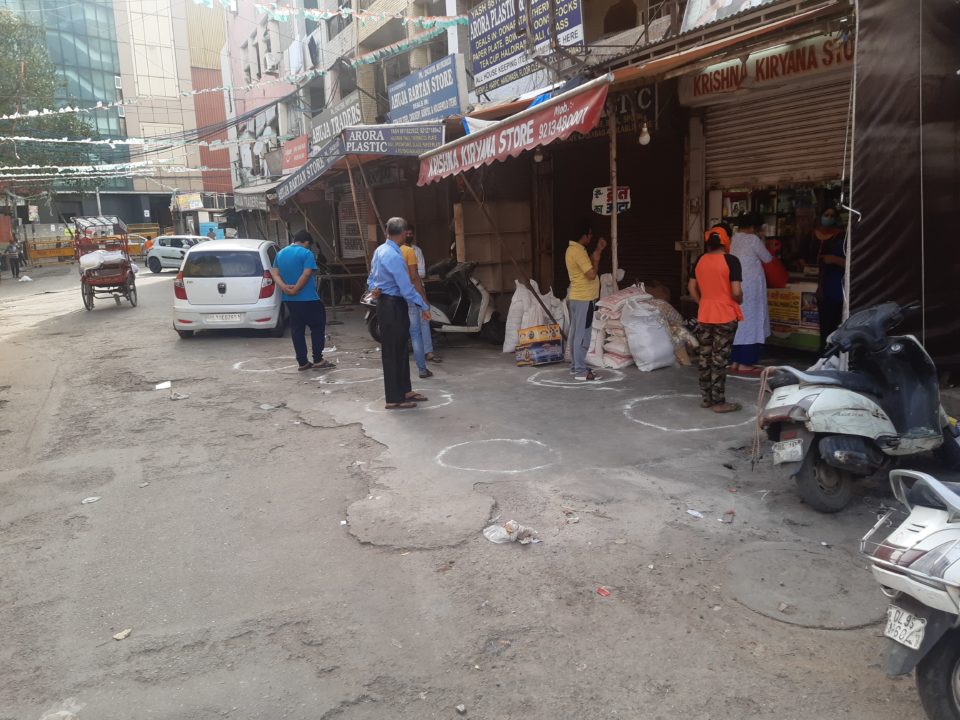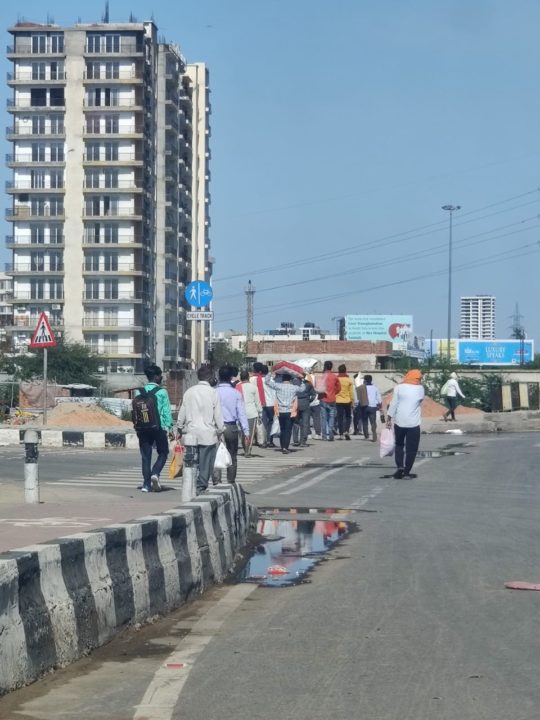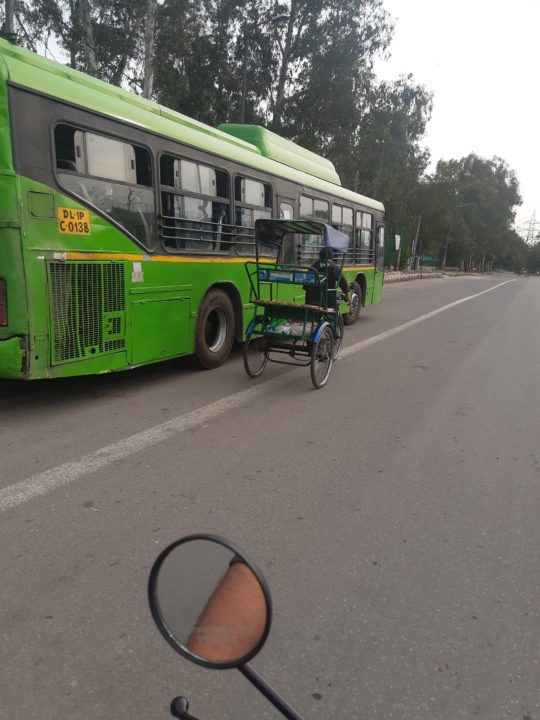Delhi roads are deserted. Only few cars, trucks, police vehicles can be seen once in a while. In general, people are taking safety measures and not coming out from their homes unless necessary and supporting police
In view of the rapid rise in the number of people infected by the Novel Coronavirus pandemic, Narendra Modi, Prime Minister, Government of India, announced that the entire country would observe a three-week lockdown in order to prevent further spread, starting from March 24. “There will be a total ban of coming out of your homes. Every state, every district, every lane, every village will be under lockdown,”Modi said in his address.
India, even with its large population, has till now appeared to successfully contain the spread of the virus in comparison with other countries like China, Italy, Spain or France. But, scientists predict that the number could increase dramatically as the nation enters in Stage 3 or Community Spread stage. A report compiled by scientists of the COV-IND 19 Study Group states that India could see anywhere between 1 to 13 lakh confirmed cases of Novel Coronavirus by the middle of May. The group of scientists, which included members from Delhi School of Economics in New Delhi and the University of Michigan in the US, suggested to adopt “draconian measures” before the growth in the number of cases accelerates. The decision of complete lockdown is in line with this and can be considered as an essential step to prevent the spread.
The announcement was made on 8 PM on March 23 and caught many people of the city off-guard, while many anticipated it given the circumstances. Hence, as a result, an atmosphere of complete disarray clouded the residential colonies of Delhi.
Panic over essentials
Although, the guidelines issued by Home Ministry mentioned that stores supplying basic amenities were to remain open, the police had to restrict their operation as panic struck residents of Delhi crowded these stores to get the ration for the coming three weeks of quarantine. Many of the shops were shut down and only a select few of vegetable vendors were in business. However, situation improved in a few hours as the police devised a way for people to access these stores without rushing them.
Depending on the shop’s working capacity, designated spots were marked at appropriate distances in order to avoid queues. When the number of people exceeded the designated spots, the policemen, who could be seen on regular round up, dispatched them accordingly.
The situation is similar in all parts of Delhi.
In some places, people are allowed to buy essential commodities like milk, vegetables and ration on a given time. A resident of Janakpuri told that the milk supply in certain stores is available between 8 am and 11am. Though, there is no shortage.

The vegetable markets have also been completely shut down. The vegetable sellers are left in an unclear position regarding their business. “There is no timing fixed for them to conduct business. Cops are ensuring strict lockdown, making repeated stops. As for the supply, trucks have been blocked to enter residential areas, hence we are managing with whatever is left,” Ramu, a vegetable hawker said. Although, the shops are closed, the police have allowed the vegetable hawkers to make rounds of the residential colonies to sell vegetables.
The e-commerce essential service providers like Grofers, Big Basket also had several issues. The delivery apps are not accepting cash on delivery and the delivery time range from 4-7 days. Along with this, several items of groceries were also reportedly out of stock. Even there is difficulty in placing orders. People are not able to place new orders and the existing orders have also not been delivered in last five days.
Out on the roads
A policeman assigned the Moti Nagar beat assured that they have been making regular rounds of the market areas with heavy footfall to monitor and apprehend people flouting the lockdown, which seems to be the case as you could not see more than a few people, none in groups, on the roads. Most people who are still plying the roads are the homeless and the out-of-work laborers. Several reports have come across which said that many of the laborers working in Delhi are moving back to their villages. With the public transportation being completely disbarred, these laborers have opted to go back to their homes on foot.

The most vulnerable group to the pandemic are those who are constantly exposed to open air, that is, the homeless people. There are a total of 118 homeless shelters that are operational in Delhi right now. These shelters have varying capacities and are located in nearly every zone of the city. These shelters are working at full capacities during this time.
We observed the biggest congregation of people in front of ACP offices, where people crowded to get permits for movement. Although, disinfectants and sanitisers were available, the lack of social distancing was a big issue, as observed outside the ACP office in Rajouri Garden on March 25.
During the lockdown, most of the roads were deserted with the exception of DTC buses plying the roads.

During the 21 days, the buses are only catering to people who are essential service providers like medical professionals, government officials. Other than that, people who are still on the roads resort to hitching rides from others. The only mode of transport operational other than the buses was rickshaws. Rickshaw pullers were operating though they are being repeatedly told not to do so. A rickshaw puller even said that they are still fetching rides, albeit not the same in number.
Delhi finally breathing clean air through the mask of COVID-19
Not surprisingly, the air quality levels during this time of restricted movement and closed down industrial units has improved significantly. The Air Quality Index (AQI), which reaches 600 during the months of November, has been reduced to an average of 60-70, falling the ‘Satisfactory’ range. This improvement is apparent through the increase in visibility and clearer sky due to the absence of smog.
